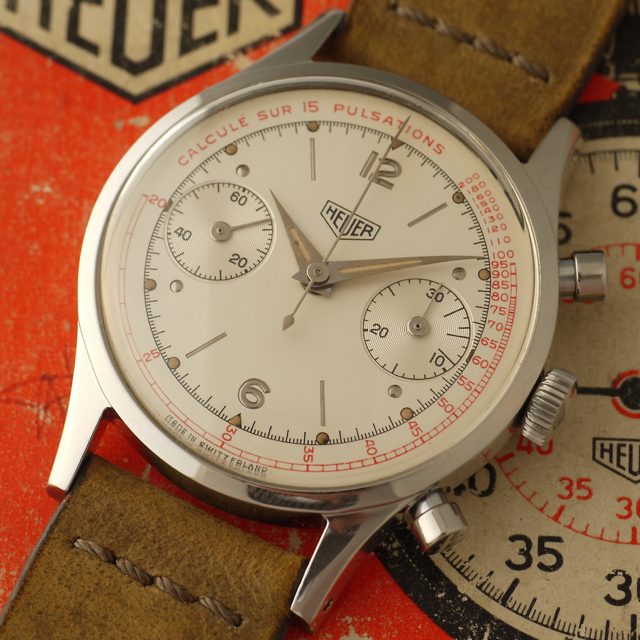
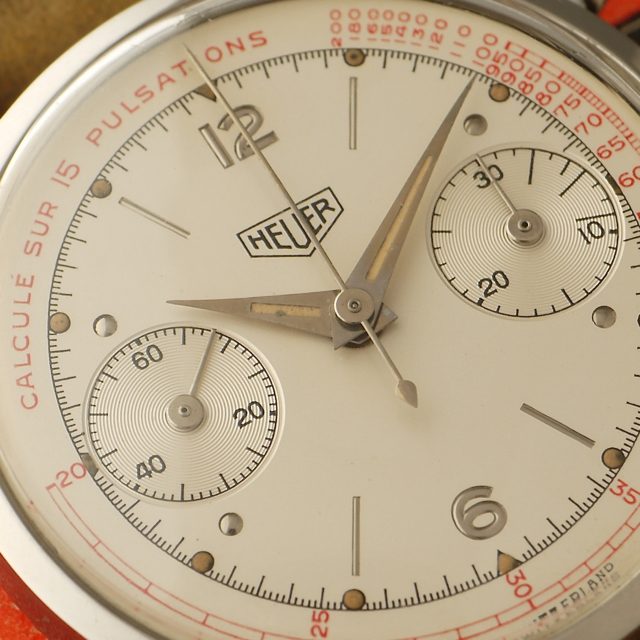
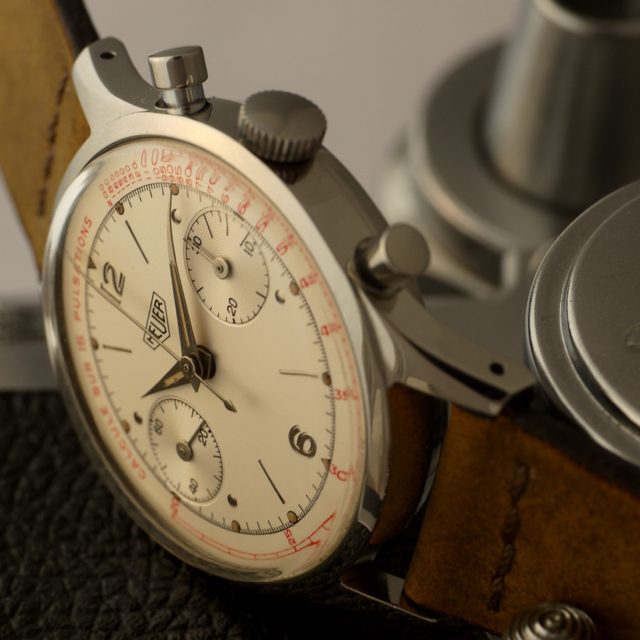
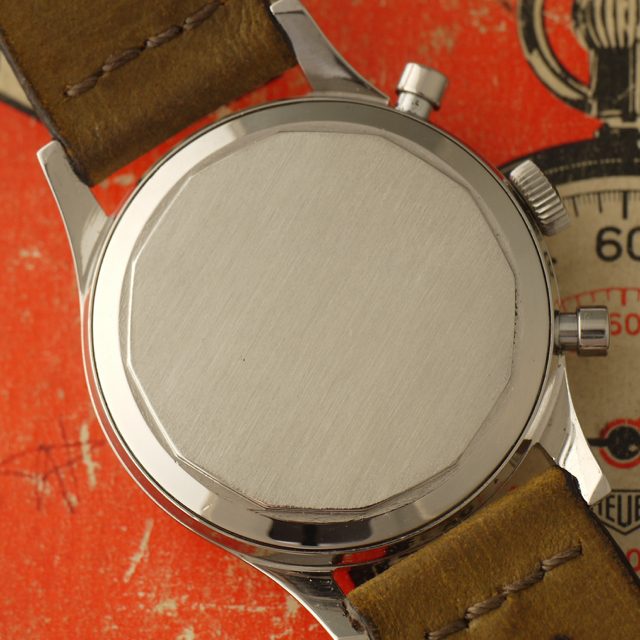
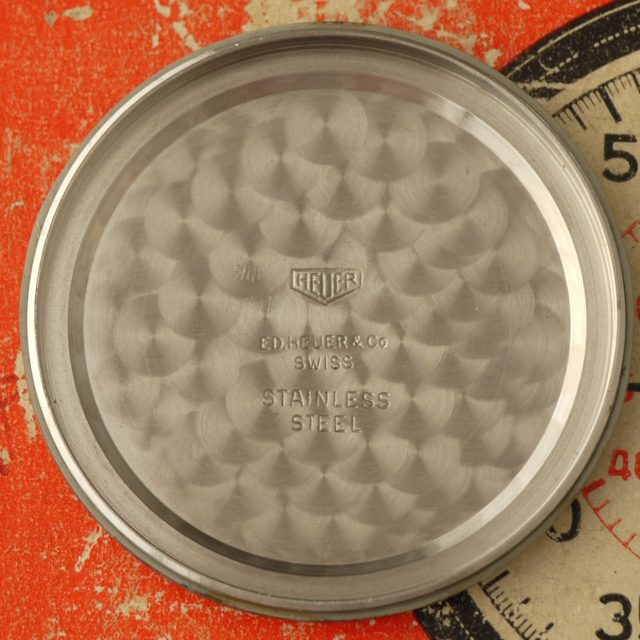
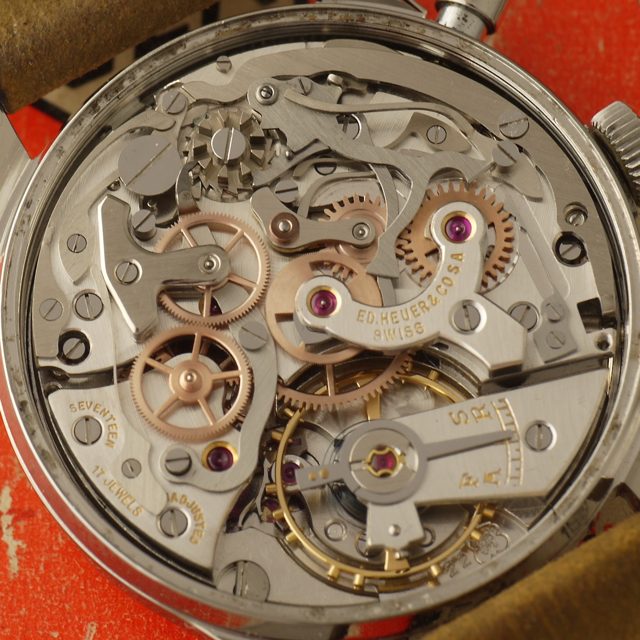
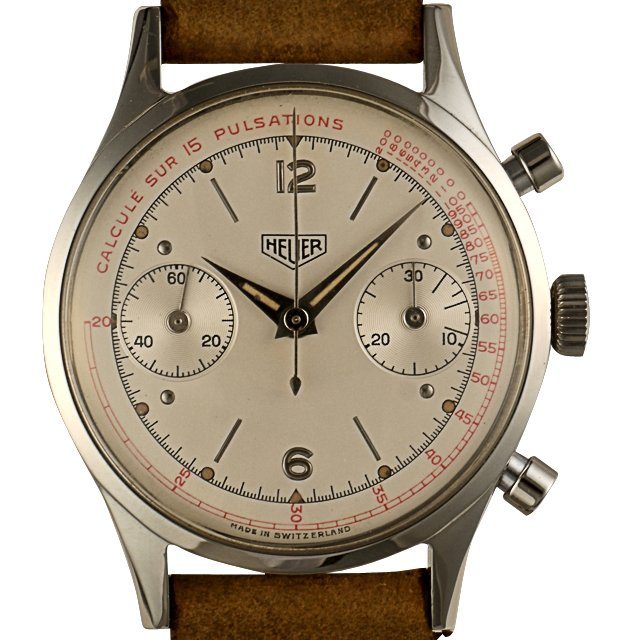
Heuer Medical chrono Pulsation
First successful open-heart surgery is performed in Philadelphia1953 Chronograph Heuer Medical Pulsation dial ref. 3336P
Heuer 3336P stainless steel 36mm case with a pulsation dial and radium indexes. The pulsation dial (designed for doctors to accurately measure a patient’s pulse) is in NOS condition, with Arabic numerals at 12 and 6 o’clock. Rounding it out is the chronograph function powered by the Valjoux 22 manual-winding movement.
The watches that begin appearing in the 1940s include some that are very much sought after classics today. Elements of models like the ref. 2543 can be seen in later watches like the Carrera, which even shares a model reference with the earlier watch. Occasionally, these watches are referred to as pre-Carreras.
It all started in 1860, with Edouard Heuer setting up a workshop in Bernese, a predominantly French-speaking area of Switzerland close to the French border, a small town even now with a population under 5000. However, it is no stranger to watches companies, having also been where Breitling was founded and has been home to Longines. Of course, those companies were artisan workshops producing small numbers of mostly silver cased pocket watches.
In 1914 Heuer made the first wristwatch for men, they used pocket-watch movements and reflected demand for wristwatches that would only increase during the First World War and after.
1920 was the first time in 8 years that an Olympic Games had been held, following the cancellation of the 1916 Berlin events. Heuer had some prominence as a sports timing company by this point and was pleased to be selected as the official timer of the Antwerp games. This was subsequently extended to the 1924 games in Paris and 1928 in Amsterdam: this cemented the brand marriage between timing and sports.
For today’s collectors, the heyday for Heuer really began in the mid-1930s. I think that’s also probably true for many other brands. Heuer began making pilots chronographs in 35. These were used by Air Force pilots primarily, a lot of them in the German Air Force. For most Heuer collectors, these pilot chronographs from around 1935 are the first real survivors that regularly can be found on the market today.
In the 1960s and 1970s, no brand was more prominent in motorsports timing than Heuer.
